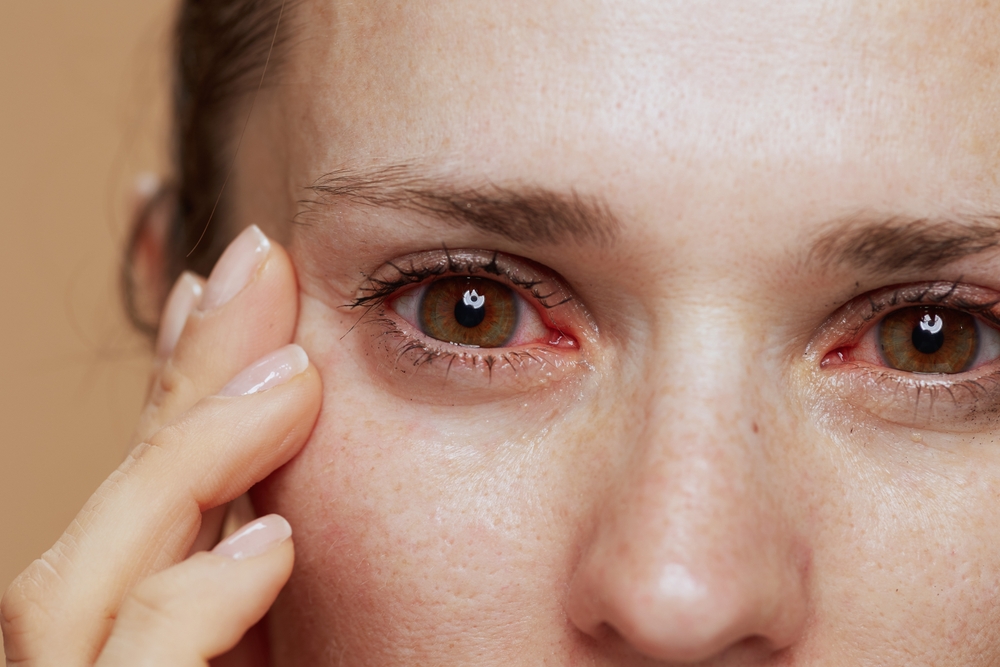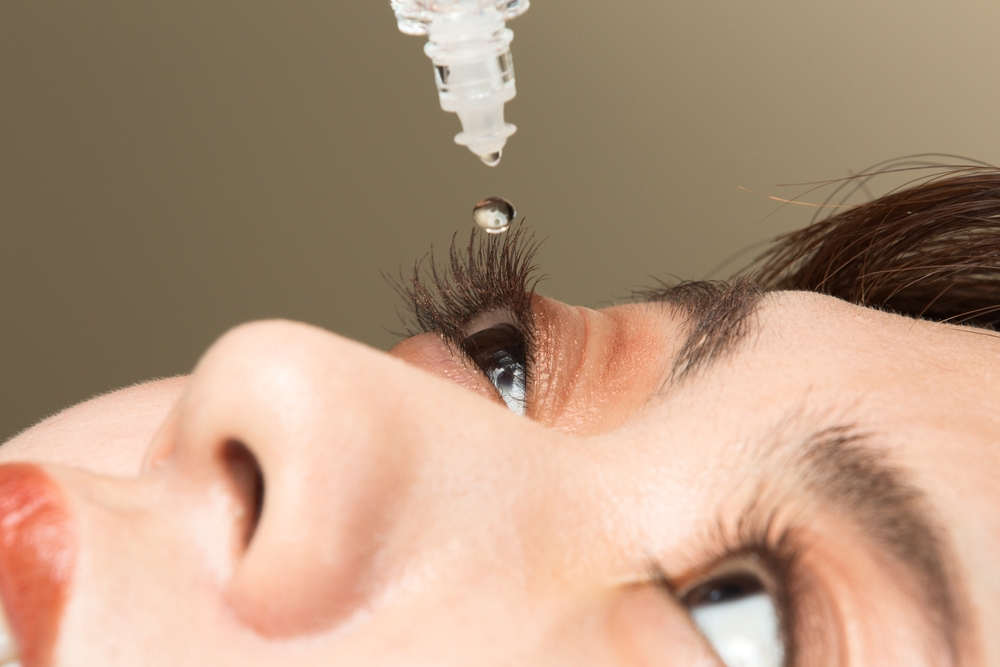Posted by: Focal Point Vision in Blog

Dry eye syndrome, a condition that affects millions of people worldwide, occurs when the eyes do not produce enough tears or when the tears evaporate too quickly. This can lead to a range of uncomfortable symptoms that can significantly impact an individual’s quality of life.
Identifying the signs and symptoms of dry eye is crucial for seeking timely treatment and managing the condition effectively. Keep reading to learn more about dry eye and what it does to your eyes!
What Are The Physical Symptoms of Dry Eye?
The overall cause of dry eyes is a lack of lubrication on the outer layer of your eyes. Without the right moisture barrier coating the surface of the eye, the eye feels more sensitive.

The moisture layer, called the tear film, usually provides protection against debris and washes away any small particles that get into the eye. Without the tear film, the surface of the eye will be more vulnerable and sensitive.
Common physical symptoms of dry eye include:
- Gritty feeling in the eyes
- Burning or stinging eyes
- Itching and soreness
- Excess tearing and watering eyes
- Redness or swelling of eyelids
- Mucus or discharge from the eyes
Can Dry Eye Cause Vision Problems?
In addition to the irritation, you may notice that your vision is affected during dry eye flare-ups. You might blink often to try to clear your vision, or you may rely on lubricating eye drops for temporary relief.
Vision issues from dry eyes can include:
- Light sensitivity and trouble driving
- Intermittent blurry vision
- Excessive eye fatigue
- Contact lenses feel uncomfortable
What Are the Causes of Dry Eye?

Dry eye disease is caused by a disruption to the tear film, which protects the eye. The tear film consists of several layers of fluids: fatty oils, aqueous fluid, and mucus.
Any imbalance of the tear film can lead to chronic dryness. Some people don’t produce enough tears to maintain the entire tear film.
This can be more common in older adults. In other cases, the tear glands may not produce the right balance of fluids.
This can lead to tears that evaporate too quickly. Other factors can increase the risk of developing dry eyes.
Risk factors for dry eyes inside:
- Age: Dry eyes can be related to aging, as eyes may not produce tears as efficiently as they used to when you were younger.
- Gender: Women are more susceptible to dry eyes. This is due in part to hormonal changes that can occur related to pregnancy or menopause in some cases.
- Diet and lifestyle: A diet low in vitamin A or omega-3 fatty acids can increase the symptoms of dry eyes. People who smoke tobacco are at a higher risk of dry eyes.
- Medical conditions: Some autoimmune diseases, such as lupus scleroderma or thyroid disease, can cause dry eyes.
Wearing contact lenses or past refractive surgery can increase the risk of dry eyes as well.
What Are the Treatments for Dry Eye?
You may not have dry eye symptoms all the time. One way to manage the condition is to be aware of what causes flare-ups.
When possible, avoid triggers or start using lubricating eye drops as soon as possible to prevent or minimize symptoms. You can try simple preventative measures to avoid dry eyes, such as:
- Use a humidifier at home or at work
- Avoid sitting near fans or air vents
- Use lubricating eye drops regularly and drink plenty of fluids
- Take breaks when reading, using the computer, or doing other tasks that require sustained eye work
- Position your computer screen below eye level
For some people, minor adjustments to their lifestyle can improve their symptoms. However, in some cases, these are not enough, and reducing symptoms requires more investigation.

Treatment Options
If your dry eyes don’t respond to measures like these, make an appointment to see your eye doctor. They can perform a complete eye exam to help you understand what is causing your dry eye symptoms.
Once you know the cause of dry eyes, they can help you set a treatment plan to protect your eye health and make you more comfortable.
Prescription and medical treatments for dry eyes include:
- Prescription eye drops that control inflammation of the eyelids or cornea or
- Medication to increase tear production
- Placing small devices called punctual plugs to block the tear ducts
The right treatment for you will vary depending on the root cause and severity of your dry eyes. In some cases, you may have to try mulitple different treatment methods before finding a regiment that works best for you.
Your eye doctor at Focal Point Vision will work with you to find a treatment that helps improve your symptoms and your quality of life.
Do you think you might be experiencing dry eye symptoms? Schedule an appointment at Focal Point Vision in San Antonio, TX, today!
